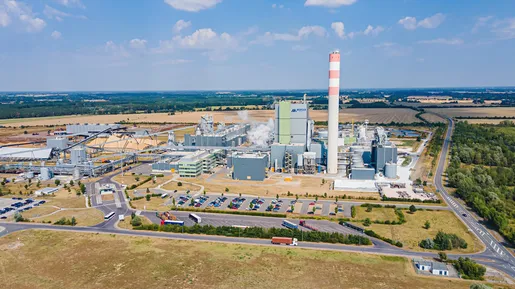WinZell
Hydrogen Utilization in Pulp Mills for Enhanced Sector Coupling Based on Biogenic CO2
Sub-project: Path Analysis, System Simulation and Life Cycle Assessment
Pulp mills have an as yet untapped potential as a site for power-to-X technologies. In addition to green electricity from biomass combustion, large amounts of biogenic carbon dioxide are also present in a pulp mill. Furthermore, a pulp mill also has the necessary infrastructure to operate a power-to-X plant (e.g. wastewater treatment, use of oxygen from electrolysis, ...).
In the project, a path study is used to analyze how hydrogen from electrolysis can be used. It is not only about the plant-internal use but also about products which can be sold. By means of a system simulation, the material and energetic integration of selected power-to-X paths in the pulp mill will be analyzed and economically evaluated. Furthermore, the combined purification of methanol from pulp cooking and from a power-to-methanol plant is investigated experimentally. Finally, the simulated production paths are evaluated with a life cycle assessment based on the ecological footprint.

Funding:
WinZell is funded by the German Federal Ministry for Economic Affairs and Energy (BMWi) as part of the "Energetic Utilization of Biogenic Residual and Waste Materials" funding initiative.

Project partner:
Mercer Zellstoff Stendal GmbH
Project duration: 01.07.2021 - 31.12.2023
Funding reference: 03EI5432A
Contact person: Daniel Klüh
Optimization model for the design of hydrogen systems in pulp mills
This model can be used to optimize hydrogen utilization paths for pulp mills in terms of costs and CO2 emissions. The model is programmed in Python and requires an optimizer such as Gurobi. The file "input parameters.xlsx" contains the parameters of the possible routes. The results of the optimization are saved in "solution.xlsx". A more detailed description of the model can be found in the final report.
-
input_parameters.xlsx By downloading the file, you accept the disclaimer: The program manufacturer TUM assumes no liability or warranty for the correctness of the calculation processes, data and calculation results from and in the programs, calculation codes and databases. Claims for damages are excluded. Passing on the program is expressly prohibited. 26 KB
-
opt_script_o_A.py.txt By downloading the file, you accept the disclaimer: The program manufacturer TUM assumes no liability or warranty for the correctness of the calculation processes, data and calculation results from and in the programs, calculation codes and databases. Claims for damages are excluded. Passing on the program is expressly prohibited. 33 KB
